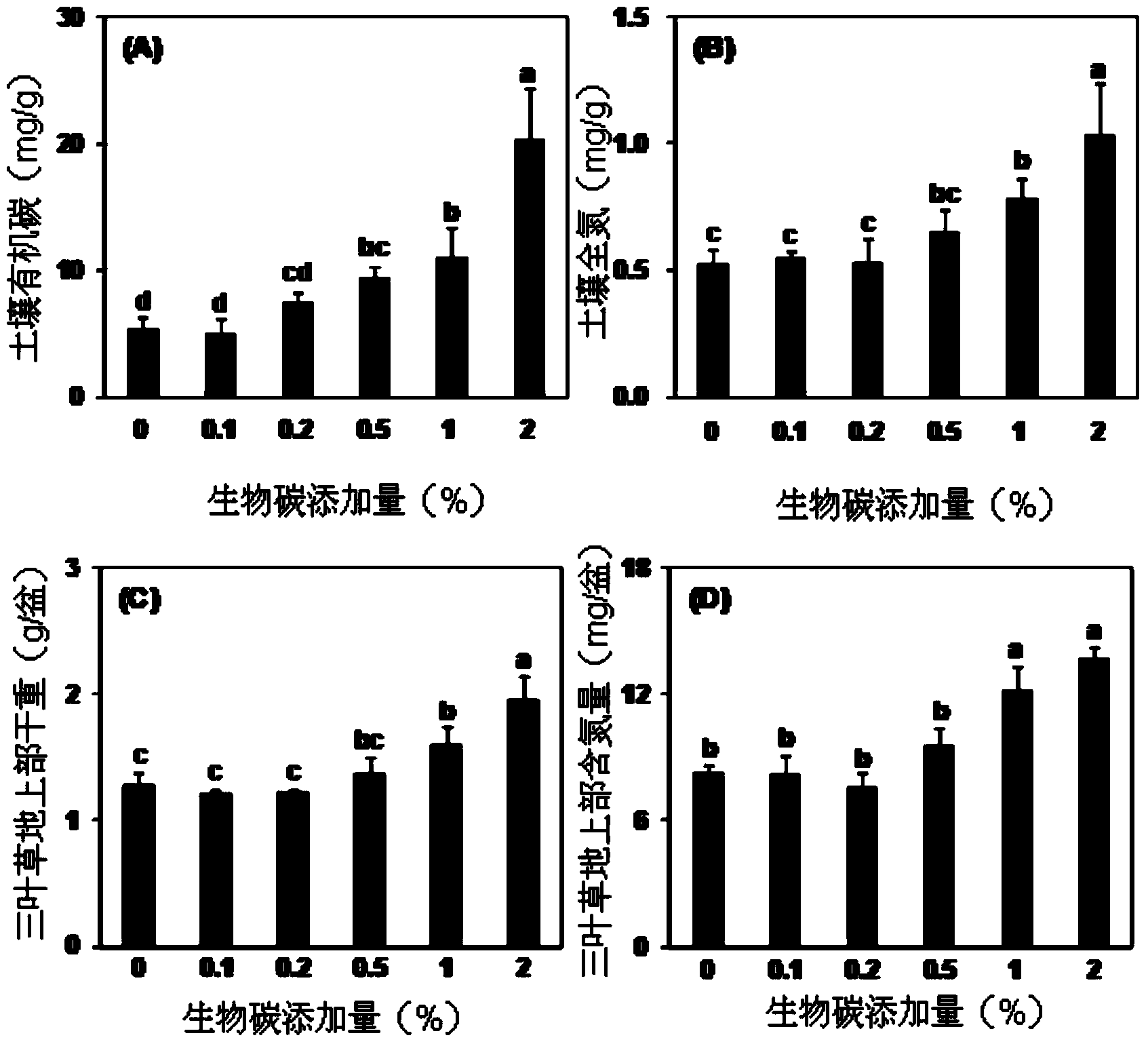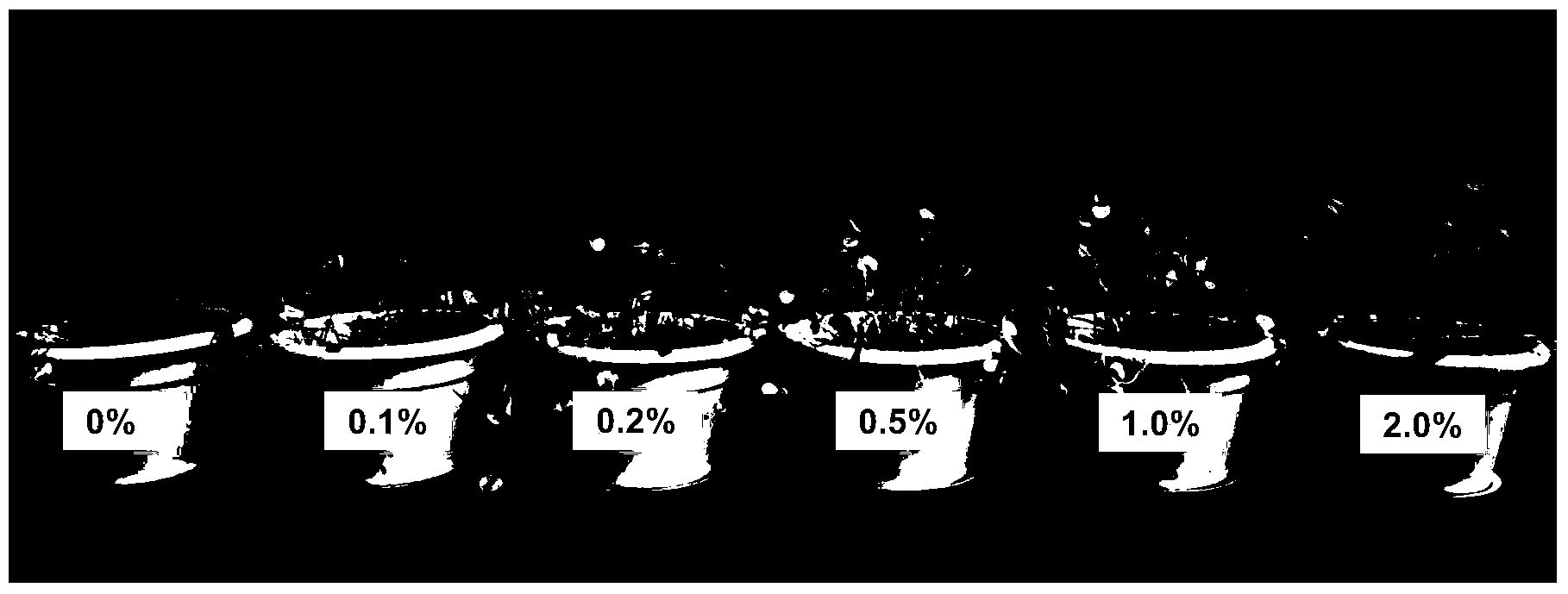Method for restoring desertificated lands by aid of charcoal
A biochar and land technology, applied in the field of land desertification prevention and control, can solve problems such as threats to the ecological security of groundwater, unsatisfactory restoration mode, leakage loss of irrigation water, etc. Effect
- Summary
- Abstract
- Description
- Claims
- Application Information
AI Technical Summary
Problems solved by technology
Method used
Image
Examples
Embodiment 1
[0033] Embodiment 1 The method of using biochar to remediate desertified land—pot test
[0034] In the method for repairing desertified land provided in this example, the biochar is prepared by pyrolysis of corn stalks under the condition of anoxic and high temperature of 400-500°C. The prepared biochar is passed through a 2mm sieve, and the ~4% by weight is added to sandy soil and mixed evenly, watered and aged for one month, planted commonly used lawn grass clover, keeping 15%~25% soil water content, harvested after 5 months of clover growth, and measured clover biological At the same time, 0%, 1%, and 2% corn straw biochar were added to the sandy soil without planting plants, and the soil bulk density, field water holding capacity and soil porosity were measured; the effective nutrient content of the sandy soil was measured.
[0035] The measuring method of the present invention is to measure soil bulk density, field water holding capacity and soil porosity by ring knife me...
Embodiment 2
[0046] Example 2 The method of using biochar to remediate desertified land——Field test
[0047] The test site in this example is located in Kangzhuang Town, Yanqing County, Beijing, N27°50′1.3″, E113°02′8.4″, which belongs to the windy and sandy area in the north of Beijing, characterized by drought and windy conditions, severe desertification, water shortage, and sparse vegetation. Yanqing belongs to the continental monsoon climate, which belongs to the transition zone between temperate zone and middle temperate zone, semi-arid zone and sub-humid zone. The climate is cold in winter and cool in summer, with an average annual temperature of 8 degrees Celsius. The particle size distribution of the soil is shown in Table 4. Biochar is prepared by pyrolysis of corn stalks under the condition of anoxic and high temperature of 400-500°C, and the prepared biochar is passed through a 2mm sieve. The test set four treatments of adding biochar and not adding biochar to bare land and al...
PUM
 Login to View More
Login to View More Abstract
Description
Claims
Application Information
 Login to View More
Login to View More - R&D
- Intellectual Property
- Life Sciences
- Materials
- Tech Scout
- Unparalleled Data Quality
- Higher Quality Content
- 60% Fewer Hallucinations
Browse by: Latest US Patents, China's latest patents, Technical Efficacy Thesaurus, Application Domain, Technology Topic, Popular Technical Reports.
© 2025 PatSnap. All rights reserved.Legal|Privacy policy|Modern Slavery Act Transparency Statement|Sitemap|About US| Contact US: help@patsnap.com



